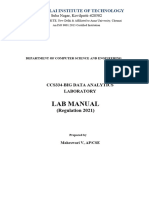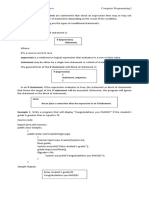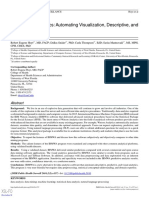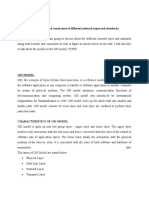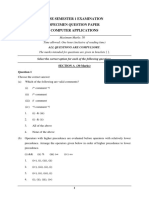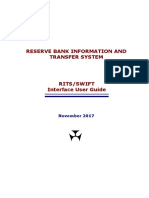0% found this document useful (0 votes)
8 views15 pagesBig Data Analytics Lab File
The document provides detailed installation instructions for Apache Hive and HBase, including prerequisites, setup steps, and configuration commands. It also includes examples of Pig Latin scripts for data manipulation tasks such as sorting, grouping, joining, filtering, and counting words. Additionally, it outlines steps to find the maximum temperature for each year using Pig Latin.
Uploaded by
kanehoj367Copyright
© © All Rights Reserved
We take content rights seriously. If you suspect this is your content, claim it here.
Available Formats
Download as PDF, TXT or read online on Scribd
0% found this document useful (0 votes)
8 views15 pagesBig Data Analytics Lab File
The document provides detailed installation instructions for Apache Hive and HBase, including prerequisites, setup steps, and configuration commands. It also includes examples of Pig Latin scripts for data manipulation tasks such as sorting, grouping, joining, filtering, and counting words. Additionally, it outlines steps to find the maximum temperature for each year using Pig Latin.
Uploaded by
kanehoj367Copyright
© © All Rights Reserved
We take content rights seriously. If you suspect this is your content, claim it here.
Available Formats
Download as PDF, TXT or read online on Scribd
/ 15






























